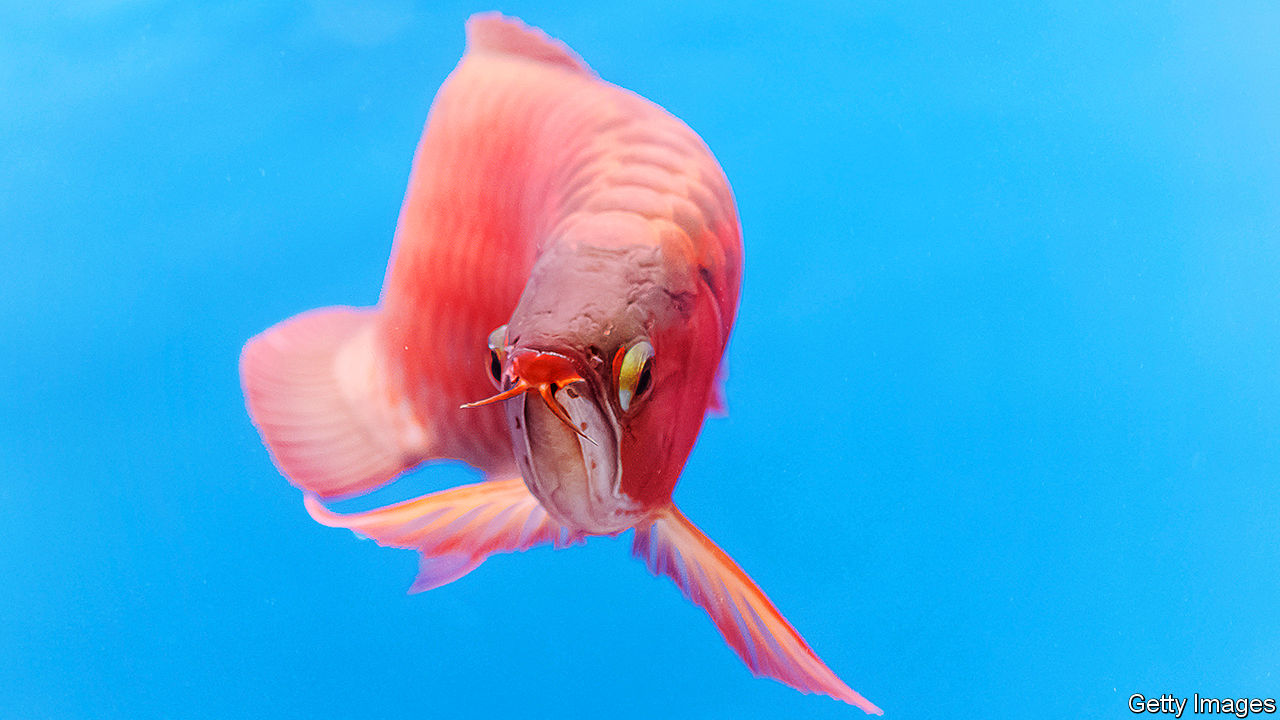Why Asia is Obsessed with Arowanas? The pricey ornamental fish is thought to resemble a dragon and bring good luck

That is because arowanas, or “dragonfish”, are the world’s most-prized aquarium pets. They come in a range of colours and are bred across South-East Asia. In Singapore the average price for a young arowana is around $300. Rare breeds, like the red ones found in West Kalimantan, go for about $1,500. Adult albinos sell for an astronomical $70,000.
The fish was listed as endangered in 1975. That helped turn it from a meal into a status symbol, says Emily Voigt, author of a book on arowanas. By the 1980s they were in vogue in Taiwan before spreading to the rest of Asia. Superstition also helps make them popular. Some owners believe they bring good luck. Their dragon-like features—shimmering scales and long bodies—add to the allure.
But the surge in new breeders has depressed prices, says Yap Kok Cheng of Qian Hu Corporation, an ornamental-fish firm in Singapore. In the 2000s new money flooded into the market. Big farms proliferated. Data from the Convention on International Trade in Endangered Species track the legal exports of arowanas. In 2016 over 200,000 trades were recorded, three times more than in 2006. Most of the fish came from Indonesia or Malaysia and ended up in Chinese aquariums. Breeders in Singapore say that since the 2000s the price of red arowanas has fallen by a third.
Still, arowanas remain Asia’s favourite fish, despite competition. Their appeal has endured partly because they are tricky to breed. Mr Yap’s farm collects DNA from the fish to help monitor their fecundity and boost productivity.
But the high price makes the arowana business risky. Violent thefts are not uncommon. Owners have even been killed or kidnapped for their fish. At fish beauty-contests armed guards escort rare breeds. So valuable a pet needs pampering, too. Plastic surgeons for fish have sprung up in Singapore. Procedures include eyelid lifts and fin enlargements. Some owners, known as arofanatics, put their fish through a tanning regime to perfect their hue.